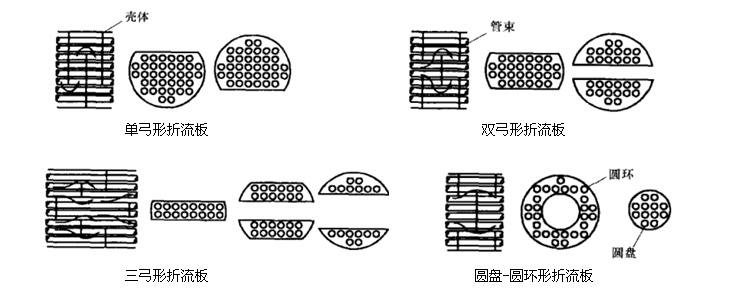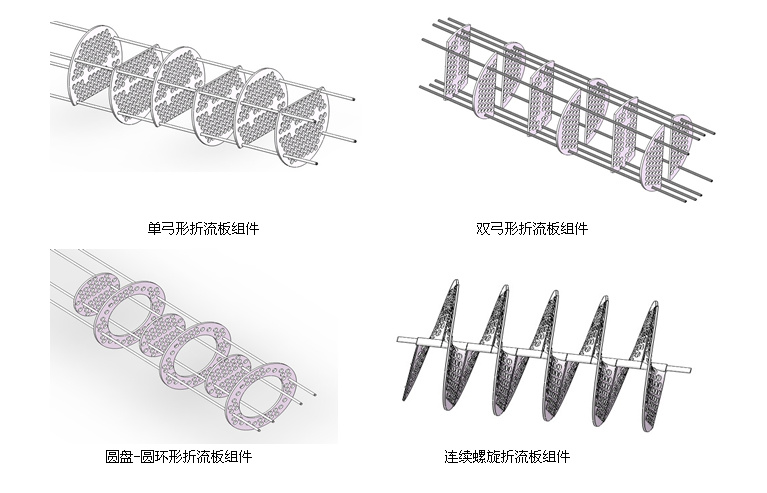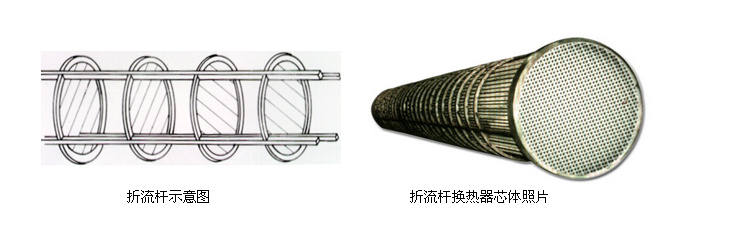NEWS
Development of tube bundle support structure for shell and tube heat exchanger
2014-09-23 10:18
The development of shell-side baffles and tube bundle supports of shell-and-tube heat exchangers shows the change and development of baffle forms. Their characteristics are that through the development and improvement of the support structure of shell-side heat exchange tubes, the heat transfer dead zone of shell-side fluid flow can be eliminated as much as possible, the heat transfer performance of shell-side can be improved, the flow resistance of shell-side can be reduced, the flow velocity can be increased, and the scale can be reduced. The forms that have emerged so far can be summarized as baffles, baffles, and other types of structures.
The setting of the baffle plate can increase the flow rate of the shell-side fluid, increase the degree of turbulence, and make the shell-side fluid vertically flush the tube bundle to improve the heat transfer, and increase the heat transfer coefficient of the shell-side fluid. Bowed baffle is the most commonly used form of baffle, he is in the whole circular plate cut off a circular area, its role is to bend the flow that changes the flow direction. The arrangement of multiple baffles in the shell side makes the fluid gradually cross the baffles and flow in a "zigzag" shape. The bow baffle has a single bow, double bow and three bow (see the attached figure). In the large diameter heat exchanger, such as the baffle spacing is larger, the fluid around the baffle behind close to the shell, there will be a part of the fluid stagnation, the formation of heat transfer adverse "dead zone", in order to eliminate this effect, you can use multi-bow baffle. The multi-arcuate baffle has a large opening area, and the flow direction of the fluid in the shell side is not a single transverse scour, so the pressure drop is small. In addition to bow, the commonly used baffle form is disc-ring, which is composed of large-diameter perforated ring plates and small-diameter disc plates arranged in a staggered manner. The characteristics of medium flow are symmetrical to the axis, and the flow is mostly parallel to the tube bundle. Therefore, the flow resistance is smaller than that of single bow baffle, and the vibration caused by cross flow perpendicular to the tube is smaller, but the shell-side heat transfer coefficient is smaller than that of single bow. In addition, there are spiral baffles. Spiral baffles include 1/4 spiral baffles, 1/3 spiral baffles and continuous spiral baffles (see attached figure). Under the same flow rate, the pressure loss of spiral baffles is much smaller than that of arcuate baffles. Therefore, the shell side flow rate of spiral plate heat exchanger can be designed to be very large, with small pressure loss, no flow blind area and reduced fouling. The large heat transfer coefficient per unit is an obvious feature of spiral baffle.


In addition to the baffle type tube bundle support structure, the most commonly used is the baffle rod type tube bundle support structure. The baffle rod is the most commonly used grating baffle method to support the tube and increase the turbulence of the shell-side fluid. The fluid flow of the rod baffle heat exchanger is parallel to the tube, and the fluid-induced vibration will be eliminated by the baffle support of the tube. When the flow velocity of the fluid reaches a certain value, the fluid passes through the vortex shedding at the support rod and the Venturi effect at the baffle ring to produce a vortex wake behind. The greater the flow velocity of the fluid, the more intense the turbulence, thus enhancing the heat transfer. After the strength of the swirling flow is weakened, the fluid passes through the following baffle element to generate a new swirling flow and throttling. With the acceleration of fluid flow rate and the enhancement of turbulence, the shear force of fluid on the outer boundary layer of the tube is increased, which not only improves the heat transfer coefficient but also has the effect of descaling and anti-scaling. The baffle rod and the heat exchange tube are point contact or line contact, and the contact area is small, so the heat exchange area is fully utilized and the heat exchange dead zone is eliminated. Because there is neither the lateral resistance of the tube bundle nor the repeated transformation effect, the shell pressure drop is very small. Since the main flow area of the shell side of the rod baffle heat exchanger is longitudinal flow, the rod baffle heat exchanger has the advantages of good vibration resistance, reduced shell side pressure, and strong anti-fouling performance. The disadvantage of the baffle rod is that it can only show its excellent performance under the condition of large flow or high flow rate.

In addition to the baffle, baffle rod type tube bundle support structure, as well as the whole circular baffle plate type, hollow ring type, heat exchange tube self-supporting type, spiral twisted sheet support structure, etc., in short, each structure has its advantages and disadvantages, the design should be selected according to the specific situation.
In summary, from the structural point of view, the tube bundle support structure tends to be simplified, and the flow area between tubes tends to be enlarged. From the performance point of view, the development of the support structure has the following characteristics: when the fluid flow in the shell side changes from transverse flow to longitudinal flow or spiral flow, the flow resistance is reduced, the flow pressure drop is reduced, and the heat transfer area is fully utilized, thus the comprehensive heat transfer performance of the shell side is obviously improved; The anti-vibration performance and anti-fouling performance are significantly improved, which prolongs the service life of the equipment and reduces the maintenance cost. Simplification of the support structure makes manufacturing more convenient, and save investment in materials and equipment. However, at this stage, the influence of various support structures on the fluid flow in the shell side is still not very clear, the theoretical research is still not perfect, which kind of structure is the best still needs to do more comparative research. However, it should also be pointed out that the influence of the shell side support structure on the overall heat transfer performance of the heat exchanger is limited, and it also depends on the difference between the heat transfer performance of the fluid in the tube side and the heat transfer performance of the fluid in the shell side.
Previous Page:
Related News
Contact Phone
Contact Address
Hantang Road, Industrial Concentration Zone, Dongping Town, Lishui District, Nanjing City
Copyright ©Nanjing Lengde Energy Saving Technology Co., Ltd.















